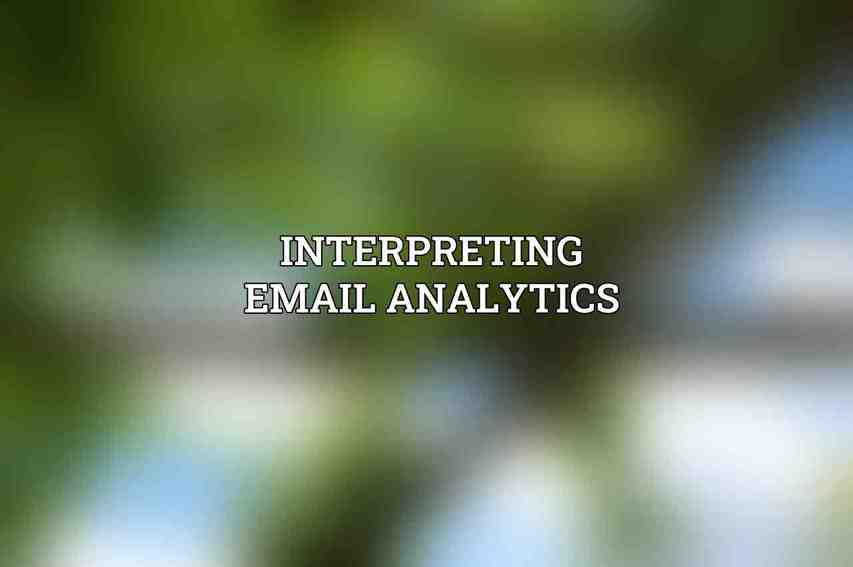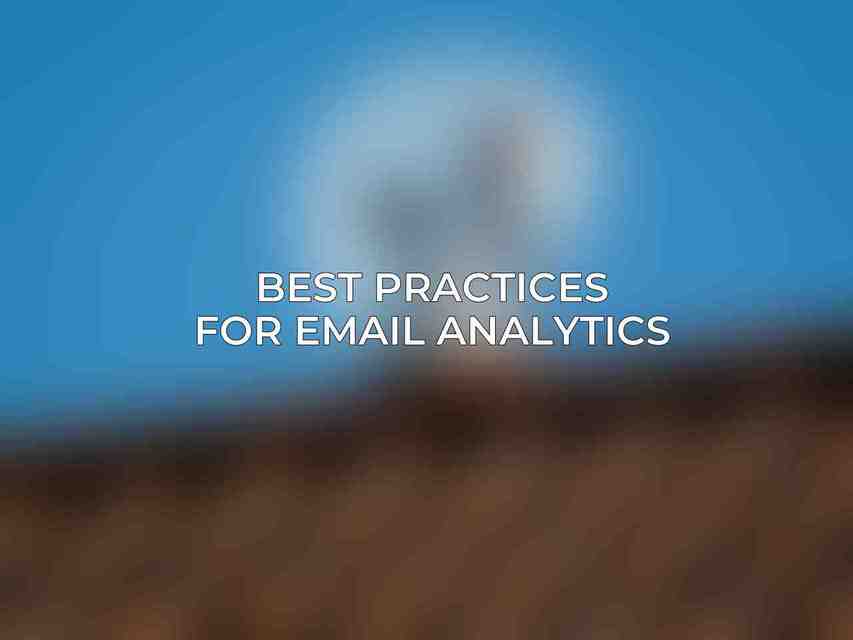Email analytics is a vital component of any successful email marketing strategy. It involves tracking and analyzing various metrics related to email campaigns to gauge their performance and effectiveness. By delving into email analytics, marketers can gain valuable insights into subscriber behavior, campaign success, and areas for improvement.
Key benefits of tracking email analytics include:
- Measuring Engagement: Understanding how subscribers interact with emails through metrics such as open rates and click-through rates.
- Enhancing Targeting: Tailoring content based on analytics data to resonate with recipients.
- Improving ROI: Optimizing campaigns by identifying what works and what doesn’t through metrics like conversion rates and ROI.
Essential Email Analytics Metrics
A. Open Rate
The open rate is a fundamental metric in email marketing, indicating the percentage of recipients who open an email. The formula for calculating the open rate is:
[\frac{Number \ of \ Unique \ Opens{Number \ of \ Delivered \ Emails \times 100]
Industry benchmarks for open rates vary by sector, with averages ranging from 15% to 25%. Understanding open rates can provide insights into the effectiveness of subject lines, send times, and audience engagement.
B. Click-Through Rate (CTR)
The CTR measures the percentage of recipients who click on a link or call-to-action within an email. The formula for CTR is:
[\frac{Number \ of \ Clicks{Number \ of \ Delivered \ Emails \times 100]
Industry benchmarks for CTRs differ across industries, with averages typically falling between 2% to 5%. Marketers can enhance CTRs by optimizing email content, designing compelling CTAs, and segmenting email lists effectively.
C. Bounce Rate
The bounce rate in email analytics indicates the percentage of emails that were not delivered successfully. Bounces are categorized as either hard (permanent delivery failures) or soft (temporary issues). Ideally, bounce rates should stay below 2% to 3% to maintain a healthy sender reputation.
D. Conversion Rate
The conversion rate signifies the percentage of recipients who take a desired action after engaging with an email, such as making a purchase or signing up for a service. The formula for conversion rate is:
[\frac{Number \ of \ Conversions{Number \ of \ Clicks \times 100]
Tracking and optimizing conversion rates can help marketers understand the effectiveness of their email campaigns in driving specific outcomes.
E. Return on Investment (ROI)
ROI in email marketing shows the return generated from a campaign relative to the investment. The formula for calculating ROI is:
[\frac{(Revenue \ from \ Campaign – Cost \ of \ Campaign){Cost \ of \ Campaign \times 100]
By analyzing ROI, marketers can assess the profitability of their email marketing efforts and allocate resources more effectively.
Interpreting Email Analytics

Interpreting email analytics goes beyond just looking at numbers; it involves understanding the context behind the data. Marketers should identify patterns, trends, and outliers to make informed decisions about their email campaigns. By interpreting email analytics, businesses can:
- Identify areas for improvement: Recognize underperforming aspects of campaigns and implement strategies to enhance them.
- Set realistic goals: Establish achievable goals based on past performance and industry benchmarks.
- Track progress: Continuously monitor metrics to evaluate performance and adjust strategies as needed.
Advanced Email Analytics Techniques
Advanced email analytics techniques help marketers delve deeper into their data to drive more targeted and personalized campaigns:
A. Segmentation and Personalization
Segmenting email lists based on subscriber characteristics and behaviors allows for more personalized and relevant content. Personalization enhances engagement and fosters stronger relationships with subscribers.
B. A/B Testing
A/B testing involves sending variations of an email to different segments of an audience to determine which performs better. This technique helps optimize elements like subject lines, imagery, and CTAs to boost performance.
C. Attribution Modeling
including email. This technique aids in allocating resources effectively and optimizing campaign strategies.
Best Practices for Email Analytics

To make the most of email analytics, marketers should follow these best practices:
- Setting up email analytics tools: Utilize email marketing platforms like Mailchimp and HubSpot to track and analyze campaign metrics.
- Tracking key metrics regularly: Monitor metrics consistently to stay informed about campaign performance.
- Using analytics to inform strategy: Base campaign decisions on data insights to optimize results.
- Continuously optimizing campaigns: Implement changes based on analytics data to enhance email performance over time.
Case Studies and Examples
Exploring case studies and examples can provide valuable insights into how businesses have leveraged email analytics to improve their marketing efforts. Real-world scenarios demonstrate the practical application and benefits of email analytics in driving campaign success.
Future of Email Analytics
The future of email analytics is poised to witness advancements in technology and strategies that further enhance the efficacy of email marketing. Emerging trends may include more sophisticated AI and machine learning applications, advanced segmentation capabilities, and deeper integrations with other marketing channels. As email analytics continue to evolve, marketers can expect more robust tools and methodologies to optimize their campaigns and deliver enhanced user experiences.
mastering email analytics is essential for any marketer looking to maximize the impact of their email campaigns. By understanding and leveraging key metrics, interpreting data effectively, employing advanced techniques, following best practices, and staying informed about industry trends, businesses can elevate their email marketing strategies to drive engagement, conversions, and ROI.
Frequently Asked Questions
What are email analytics?
Email analytics are the tools and techniques used to track and analyze the performance of email marketing campaigns. This data includes metrics such as open rates, click-through rates, bounce rates, and conversion rates.
Why are email analytics important?
Email analytics are important because they provide valuable insights into the effectiveness of your email marketing efforts. By analyzing these metrics, you can improve your campaigns, increase engagement, and ultimately drive more conversions.
What are some key email analytics metrics to track?
Some key email analytics metrics to track include open rates, click-through rates, bounce rates, conversion rates, delivery rates, and unsubscribe rates. These metrics provide insights into how recipients are interacting with your emails.
How can I use email analytics to improve my campaigns?
You can use email analytics to identify areas for improvement in your campaigns. By analyzing the data, you can optimize your subject lines, content, send times, and more to increase engagement and conversions.
Are there any tools available to help track email analytics?
Yes, there are a variety of tools available to help track email analytics, such as Google Analytics, MailChimp, Constant Contact, and more. These tools provide detailed insights into the performance of your email marketing campaigns.
